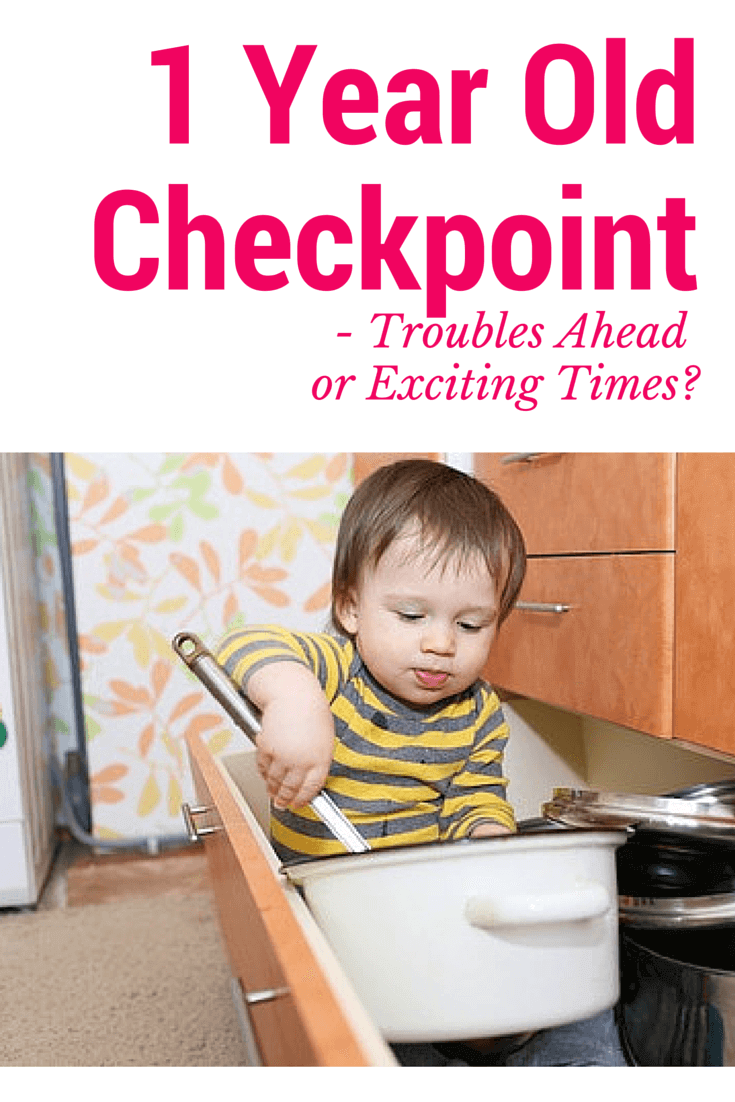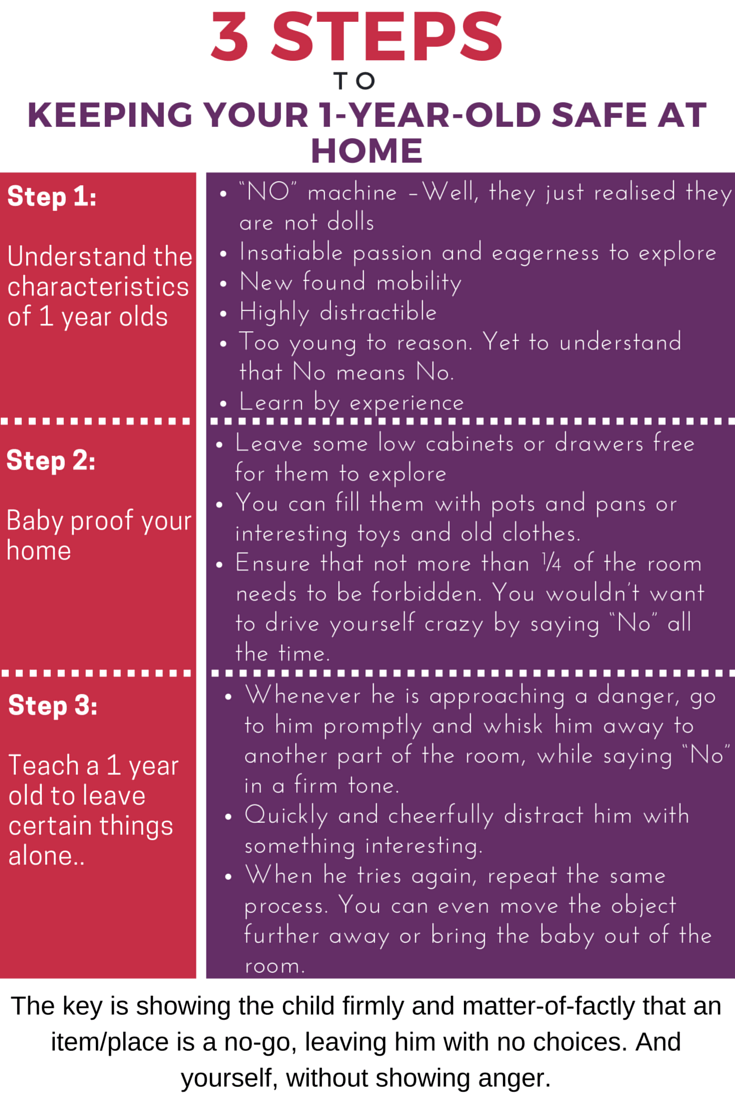
One year old is an exciting age… for both the child and the parents.
It is the age when they start to realize that they are not dolls. They do have ideas and will of their own. When you suggest something that do not appeal to them, they will assert themselves.
This is the age of “NO”.
But think about it this way, if they continue to let you boss them around, they will stop learning and developing… making them socially inept or even a little robotic.
1-year-olds have an insatiable passion and eagerness to explore. They are starting to learn about sizes, shapes, how the world around them moves and testing their limits. They will poke into every nooks and cranks, climb onto/into everything they can, lift or pull anything they can reach, try to fit small things into big things and vice versa….
This may seem like a nuisance to the tired parents but that’s the way the 1 year old is learning!
Their curiosity and urge to assert themselves, along with their new found mobility (on the average babies start walking at the age of 9 - 18 months) make 1-year-old a dangerous age too.
Yet we as parents shouldn’t stop the child from exploring. That would only make the child timid, dependent and affect their learning and development.
What we can do is prevent serious accidents by making the home a safer place for the child to explore freely – through baby proofing and steering them away from potential dangers with firm discipline.
This is the time to put all medicines, toxic chemicals, cleaning supplies, insect poison, paints and polishes safely out of the child’s reach. They are at an exploring and tasting age, whereby they will put almost anything into their mouths (yes even dirt).
1-year-olds are starting to recognize and learn about the objects around them. You may find them fascinated by something for weeks. If it is not dangerous, let them touch and play to help them with the familiarization.
However, it is also the age where they may be startled and frightened by strange objects that move or make loud noises. For example, if you find them startled by the vacuum cleaner, stop using it in their presence and wait for a few months before trying it again with them at a distance away.
This is also a time where you find contradictions in their behaviors as they are learning to be independent while realizing more about their own dependence. On one hand, you may find them crying when you step out of the room. This is because they are starting to have the realization of how much they depend on you. Yet at the same time, you find them developing an urge to explore new places or approach strangers.
What we need to realize is that they get bolder and more independent by exploring, but they can only do so with the courage from knowing that he/she can get security (from the parents!) when he/she needs it.
Sometimes they will be contented to play quietly by your side. When they get bored, they may creep away to explore. After a while, they may scramble back to find you for company/security… As they become bolder and more self-reliant, they venture further out.
Hence, be careful of the two extremes… You need not forcefully train independence by leaving them alone in the room even though they have been crying for company. Neither do you want to be over-protective and constantly hovering around them.
It is also about time your little one gets fed up of being confined in a playpen. So, if you find that they are growingly impatient and insist on being let out of the playpen, it’s time to do so.
Do baby proof your home so that it is safe for the child to wander. Install safety locks on cabinets and drawers with contents that should be kept out of the child’s reach. However, you might want to keep some cabinets/drawers free for them to explore.
You can place pots and pans in the low cabinets of the kitchen, and fill low drawers with interesting toys and old clothes. This way, you can safely allow the little ones to access them, empty out the contents, play with the contents and fill them in again to their hearts content. Avoid using tablecloths or mats that the child can pull off easily.
When baby proofing, make sure that not more than ¼ of the room that the baby will be roaming in needs to be forbidden. You wouldn’t want to drive yourself crazy by saying “No” all the time.
It is not possible to baby proof 100%. The question is how to teach a 1-year-old to leave certain things alone.

Saying “No” alone is insufficient, at least in the beginning. The young child needs to learn by experience.
One of the key traits of 1-year-olds is that they are highly distractible. Use this wisely!
Do not say “No” in a challenging or angry tone from across the room while waggling your finger. That leaves him with a choice and it is in his nature to test the limits of their actions. Remember that the 1-year-old has a new felt urge to assert themselves and explore. Chances are they will continue to move closer to the forbidden object while keeping an eye on you to see how angry you get.
Whenever he is approaching a potential danger, such as a standing lamp, go to him promptly and whisk him away to another part of the room while saying “No” in a firm tone. Quickly distract him with something interesting. When he tries to go towards the lamp again, repeat the same process and show him what he can do with other toys cheerfully. You can even move the lamp further away or bring the baby out of the room. In this way, you are showing him firmly and matter-of-factly that the lamp is a no-go, leaving him with no choices. And yourself, without showing anger.
Remember that a 1-one-year old has yet to understand that no means no. It is also not the time yet to bring him face-to-face to have a talking-to.
A 1-year-old may also get into the habit of dropping or throwing things, e.g. throwing toys out from the crib or dropping food down from the high chair, and then crying when they can’t reach for them. It’s not necessary that they are deliberately misbehaving. Dropping things is like a newly discovered skills that they want to keep practicing.
Avoid picking up the toys or food for them, else they will start thinking it’s a game between the two of you. It is pointless to get frustrated too. Put them onto the floor when they start dropping things. You may tie some of the bed toys onto the crib slat, but never use strings more than a foot long as they can be a strangulation risk.
If it is mealtime, take the food promptly and firmly away from them and place them onto the floor to play. You can assume that they are at least partly satisfied when they start throwing food. They wouldn’t be doing so when they are very hungry.
You can give them another chance if they whimper and behave like they regretted their actions. But remove the food again firmly if they continue to throw the food. You can always feed them later in the in-between meals. If you consistently remove their food when they start throwing their food from their high chair, they will not do so when they are really hungry.
Another potential risk is that 1 year olds tend to fool around during mealtimes. Sometimes, they may even stand and lean backwards on the high chair. A low chair is a safer option but if you are using a high chair, stability and a broad base are the most important features.
